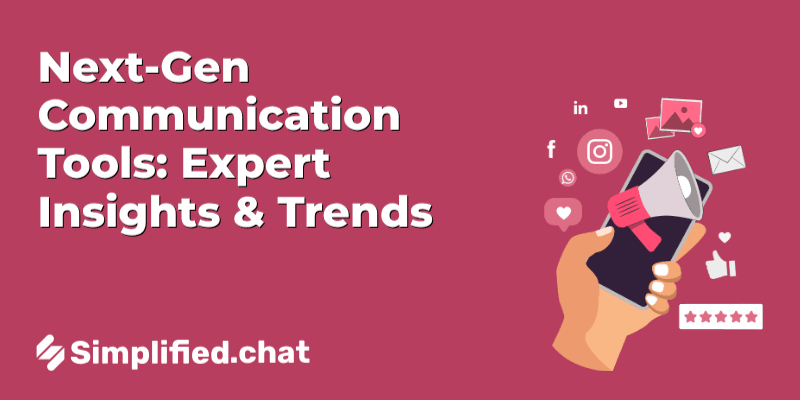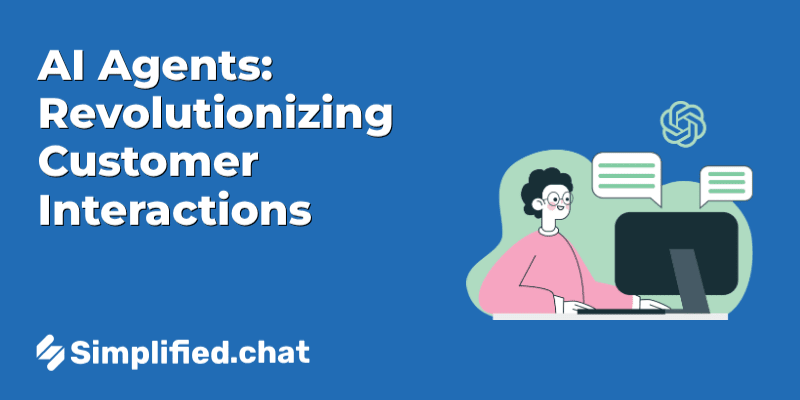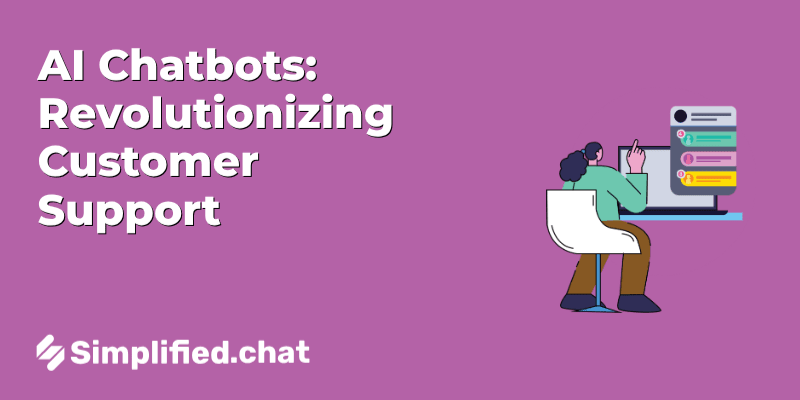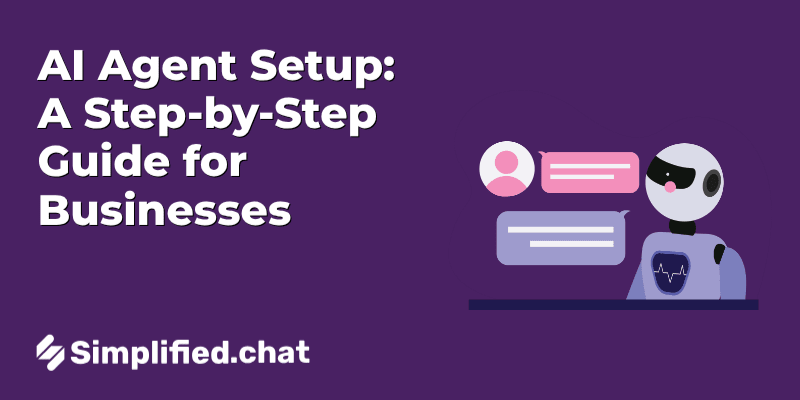Table Of Content
How Can Businesses Benefit from the Next Generation Communication Tools?
Next-generation communication tools leverage technologies like AI, machine learning, and automation to enhance how businesses interact with customers and employees. These tools aim to streamline processes, personalize interactions, and improve overall efficiency.
One authoritative resource on the next generation of communication tools is the McKinsey report titled "McKinsey Technology Trends Outlook 2024." As mentioned in the article, this report discusses emerging technologies that are reshaping business communication, including advancements in software development and automated code generation. It emphasizes the importance of these tools in enhancing organizational efficiency and communication strategies.
AI-Powered Communication Platforms: Transforming How We Connect

The integration of artificial intelligence into communication platforms has reshaped the landscape of human interaction, both personal and professional. These platforms leverage machine learning, natural language processing, and automation to create more responsive, efficient, and tailored communication experiences. Let's explore some of the most impactful developments in this space.
The Rise of AI Chatbots
AI chatbots have become ubiquitous across customer service, sales, and even internal company communications. Unlike scripted bots of the past, today's AI chatbots can understand context, maintain natural conversations, and learn from interactions to improve over time. This shift has allowed businesses to offer immediate support, reduce waiting times, and handle higher volumes of inquiries without sacrificing quality.
Key advantages include:
- 24/7 availability, providing continuous engagement without human fatigue.
- Consistency in responses, ensuring customers receive accurate information every time.
- Capability to handle multiple languages and dialects, broadening reach.
When deployed thoughtfully, AI chatbots act as a first line of communication, efficiently resolving common issues and freeing human agents to focus on more complex tasks. This evolution improves overall customer satisfaction and optimizes operational costs.
Personalized Customer Interactions
Personalization is no longer a luxury but an expectation in communication. AI-powered platforms now analyze customer data—from past interactions to preferences and behavioral patterns—to tailor messages in real time. Studies show that personalized communication significantly boosts engagement and loyalty.
Examples of personalization include:
- Dynamic content in emails based on user behavior and profile.
- Customized product recommendations during live chats.
- Adaptive tone and style adjustments that match the customer's communication preferences.
By making each interaction feel uniquely designed for the individual, companies build stronger relationships and improve the effectiveness of their communication strategies.
Automated Code Generation for Communications
Beyond customer-facing applications, AI is also transforming the backend of communication platforms through automated code generation. This capability allows developers to quickly create and update communication protocols, chat interfaces, and response logic with reduced manual coding efforts.
Benefits of automated code generation include:
- Accelerated deployment of new communication features.
- Minimized human error in repetitive coding tasks.
- Greater flexibility to experiment with communication workflows without extensive resource commitments.
As mentioned by technology experts, this automation frees developers to focus on creative and strategic projects rather than routine coding, compiling communication tools that are more adaptive and user-friendly.
In sum, AI-powered communication platforms are driving a significant evolution in how we connect. Their combination of intelligent chatbots, personalized engagement, and streamlined development is creating more meaningful, efficient, and adaptive interactions across industries.
Expert Insights on Communication Automation

Automation in communication continues to reshape how businesses and individuals interact daily. Experts across industries highlight both its significant benefits and the hurdles that come with adopting these systems. Understanding these perspectives can help organizations implement automation thoughtfully and prepare for what lies ahead.
Benefits of Communication Automation
Professionals widely acknowledge that automating communication processes streamlines operations and enhances efficiency. Key advantages they point out include:
- Consistent Messaging: Automation ensures that messages retain a uniform tone and accuracy across diverse channels, reducing human error and maintaining brand voice.
- Time Savings: Routine inquiries, updates, and follow-ups are managed with minimal human intervention, freeing teams to focus on complex tasks.
- Scalability: Automated systems can handle large volumes of communication seamlessly, which is particularly valuable during spikes in customer engagement or project demands.
- Improved Customer Experience: Automated responses can provide immediate acknowledgment and status updates, increasing satisfaction while keeping customers informed.
Challenges in Implementation
Despite its advantages, implementation is rarely without challenges. Experts caution that automating communication requires careful planning to avoid pitfalls such as:
- Lack of Personal Touch: Over-reliance on automation risks alienating audiences who value personalized interactions. Striking a balance is essential.
- Technical Complexity: Integrating automation tools with existing systems can be complicated and costly, requiring specialized skills and resources.
- Change Management: Employees and customers alike may resist shifting to automated communication, necessitating clear training and transparent communication strategies.
- Data Privacy and Security: Automated communication often involves sensitive data, so maintaining compliance with privacy regulations and securing information is critical.
Future Trends in Automation
Looking ahead, experts anticipate several developments that will influence communication automation:
- Advanced AI Integration: Tools will become more sophisticated, interpreting context and emotions to create more nuanced, human-like responses.
- Omnichannel Coordination: Automation platforms will better unify communication across email, chat, phone, and social media to provide seamless user experiences.
- Predictive Communication: Systems will increasingly analyze data to anticipate needs and proactively reach out before users request assistance.
- Ethical Automation: Growing emphasis on ethical guidelines will shape how automated communication respects user consent and transparency.
As studies suggest, organizations that stay adaptable and prioritize thoughtful implementation will benefit most from communication automation's evolving capabilities.
Integrating Advanced Tools for Effective Results

Incorporating advanced tools into your workflow can significantly enhance productivity and outcomes, but it requires thoughtful planning and execution. Simply adopting new technology doesn’t guarantee success; the key lies in choosing the tools that align with your objectives, implementing them strategically, and consistently evaluating their impact.
Choosing the Right Tools
Selecting suitable tools demands a clear understanding of your specific needs and the challenges you aim to address. Begin by:
- Identifying pain points within current processes that could benefit from technological assistance.
- Researching tools that have a proven record for your industry or use case, considering factors like usability, scalability, and integration capabilities.
- Prioritizing tools that complement your existing systems to minimize disruption and learning curves.
Studies show that involving end-users early in the evaluation phase often leads to higher adoption rates and more accurate identification of essential features.
Implementation Strategies
Successfully rolling out new tools requires more than installation—it demands a structured approach:
- Plan Thoroughly: Define clear goals and expectations for what the tools should achieve.
- Train Your Team: Provide comprehensive training sessions coupled with ongoing support to ensure comfort and competence.
- Pilot Programs: Start with a small-scale implementation to gather feedback and troubleshoot before a full rollout.
- Communicate Transparently: Keep all stakeholders informed about changes, timelines, and benefits to foster engagement.
This staged approach helps in reducing resistance and allows for course correction early in the process.
Measuring Success
To understand whether the integration is working, define measurable metrics aligned with your initial goals. Common indicators include:
- Efficiency gains such as time saved on routine tasks or reduction in manual errors.
- User engagement and satisfaction tracked through surveys or usage analytics.
- Impact on overall business outcomes like increased sales, better customer retention, or improved collaboration.
Implementing regular reviews ensures continual improvement and helps justify the investment. Remember, measurement is not a one-time activity but an ongoing practice to keep the technology aligned with evolving needs.
Enhance Your Business Communication Strategy Today
The evolving landscape of communication technology offers numerous opportunities to improve how your business interacts internally and externally. By adopting AI chatbots and automation, you can streamline operations and provide personalized interactions that foster stronger relationships.
Simplified.chat offers AI chatbot solutions designed to work with your current platforms, helping you connect with your audience more effectively and efficiently.
Discover how these tools can transform your communication approach. Visit Simplified.chat today to explore the potential benefits and take the next step toward enhanced business communication.
Empower Your Business with Simplified AI Chatbot
Build Your Own AI ChatbotBuild Your First AI Agent Today
Build, train, customize and deploy your first AI chatbot in minutes




